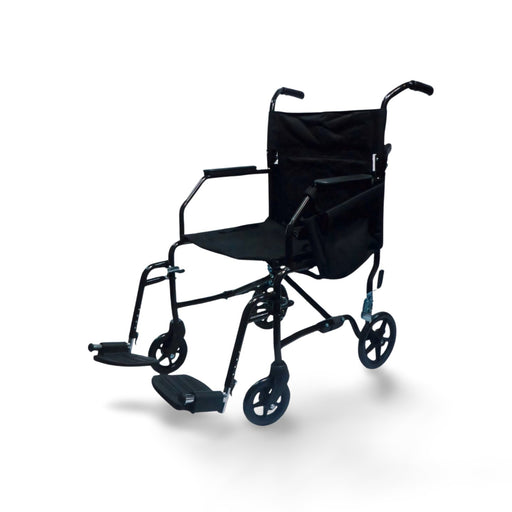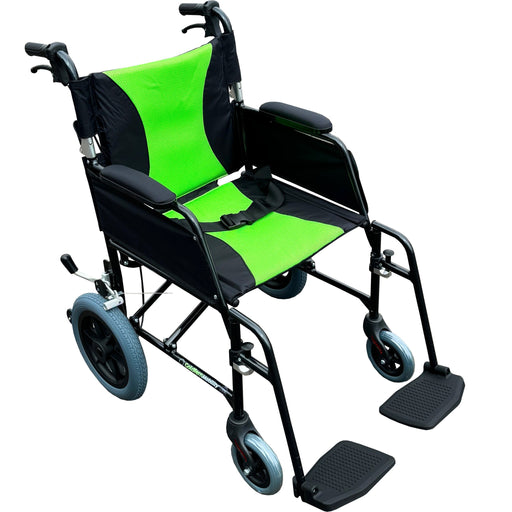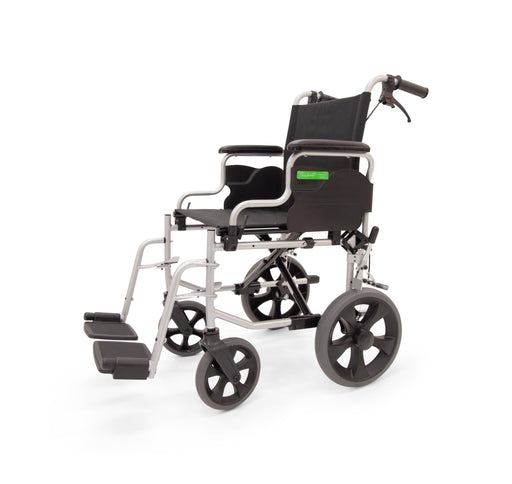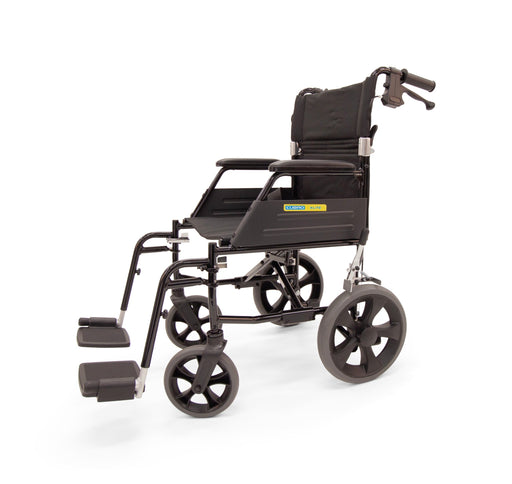With so many wheelchair features available, it’s easy to feel like you need every single one — but that’s not always the case. The best chair is the one that suits your lifestyle, strength, transport needs, and support network.
Here’s how to think about which features are essential — and which ones you might not need right now:
✅ Lightweight Frame
Essential if: The wheelchair needs to be lifted into vehicles frequently or handled by caregivers with limited strength.
❌ Not necessary if: The wheelchair remains stationary or is mainly used around the home or care facility.
Lightweight frames, often made from aluminium, make handling and transport more manageable.
✅ Quick-Release Rear Wheels
Essential if: You’ve chosen a manual wheelchair with large rear wheels and want to make car transport easier.
❌ Not necessary if: You’re using a transit chair with small wheels that already folds compactly.
Quick-release wheels remove in seconds, making the wheelchair flatter and easier to fit in smaller cars.
✅ Swing-Away or Removable Footrests
Essential if: You’re lifting the chair in and out of the car or helping someone in and out of the seat.
❌ Not necessary if: The chair stays set up in one place, like a care facility or home.
Being able to swing footrests to the side or remove them helps with tight spaces and transfers.
✅ Dual Braking System
Essential if: The person pushing the chair (a caregiver, partner, or family member) needs extra control over the wheelchair — especially on ramps, slopes, or uneven ground.
❌ Not necessary if: The wheelchair is only used indoors on flat, smooth surfaces.
All wheelchairs have standard brakes on the rear wheels, but many models also include brakes on the push handles. These are designed for the person pushing the chair and work just like bicycle brakes — allowing the attendant to slow or stop the wheelchair safely. These brakes can also be locked into place to stop the chair from moving when parked.
This feature is especially helpful when the person pushing the wheelchair is smaller or lighter than the person seated, or when going down hills or kerbs.
✅ Solid, Puncture-Proof Tyres
Essential if: You want a hassle-free wheelchair that can handle most surfaces without worrying about punctures.
❌ Not necessary if: You need maximum shock absorption on very uneven ground — although most users find solid tyres ideal.
All wheelchairs sold by Mobility Plus NZ come with solid tyres as standard — for peace of mind and no maintenance.
✅ Seat Cushioning – Always Needed for Wheelchair Use
A proper cushion is essential for every wheelchair, no matter how often it’s used. Whether you’re sitting for 10 minutes or several hours, the standard built-in padding simply doesn’t provide enough comfort or support — especially on folding wheelchairs where the seat base is thin and firm.
A separate pressure relief cushion helps prevent pain, improves posture, reduces pressure on sensitive areas like the coccyx and hips, and supports long-term skin health. These are sold separately so you can choose the thickness, shape, and style that best meets your needs.
All our wheelchairs include basic seat padding, but we strongly recommend adding a separate cushion for extended comfort. These are sold separately so you can choose the one that suits your needs.
✅ Folding Push Handles & Removable Footrests
Essential if: You need the wheelchair to fit into a smaller car boot or storage space — especially when lifting and transporting it regularly.
❌ Not necessary if: The chair stays set up at home or is rarely transported.
Some wheelchairs include push handles that fold down and footrests that swing away or remove completely. These features dramatically reduce the folded size of the wheelchair, making it easier to fit in compact boots or back seats — even small hatchbacks.
They also make lifting safer and more manageable, especially for caregivers with limited strength. Many families find these features essential when the person helping with transport is an older spouse or partner.
✅ Weight & Folded Size
Essential if: You or your caregiver need to lift the wheelchair in and out of the car regularly.
❌ Not necessary if: The wheelchair stays in one place — such as in a rest home, hospital, or by the front door.
The weight of the wheelchair makes a huge difference to everyday usability. Many people don’t realise how hard it can be to lift a chair into a car boot — especially for caregivers who may be older or have limited strength.
A lightweight chair (under 11kg) is considered much easier to manage. But be careful — the lightest models can sometimes mean a drop in quality, stability, or essential features. Always check the frame strength, braking system, and comfort before prioritising weight alone.
Look for options with fold-down push handles and removable footrests, which can make the chair fold up much smaller and easier to handle — ideal for smaller cars, taxis, or travel.
















